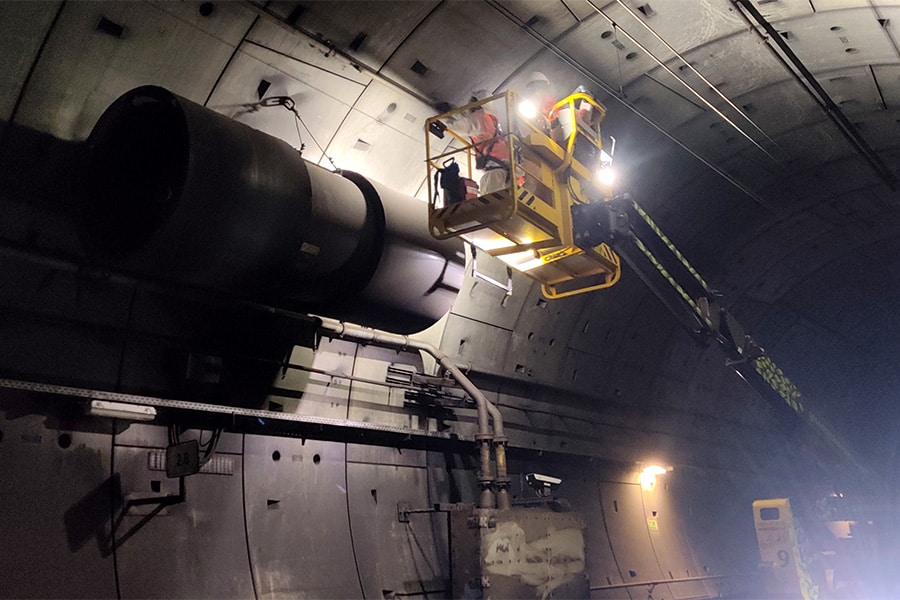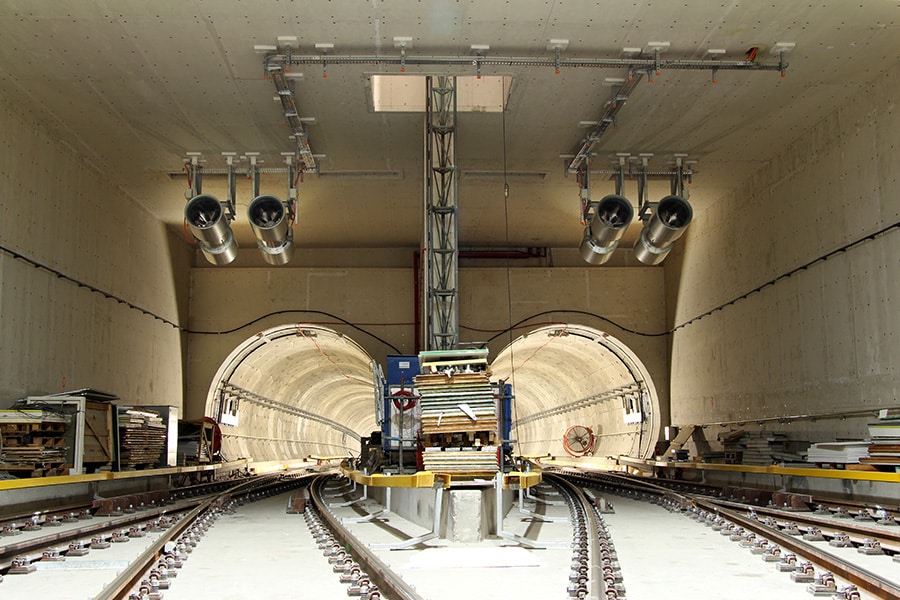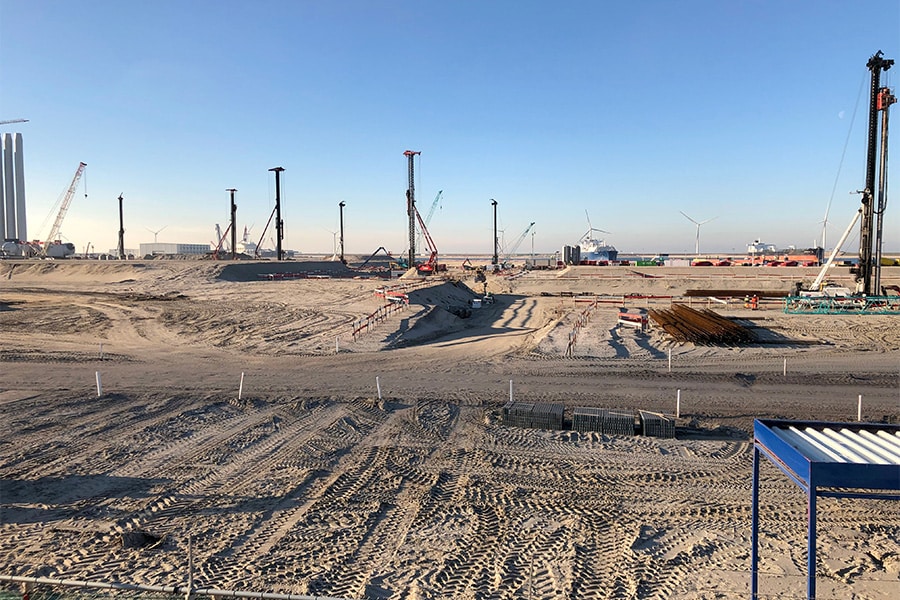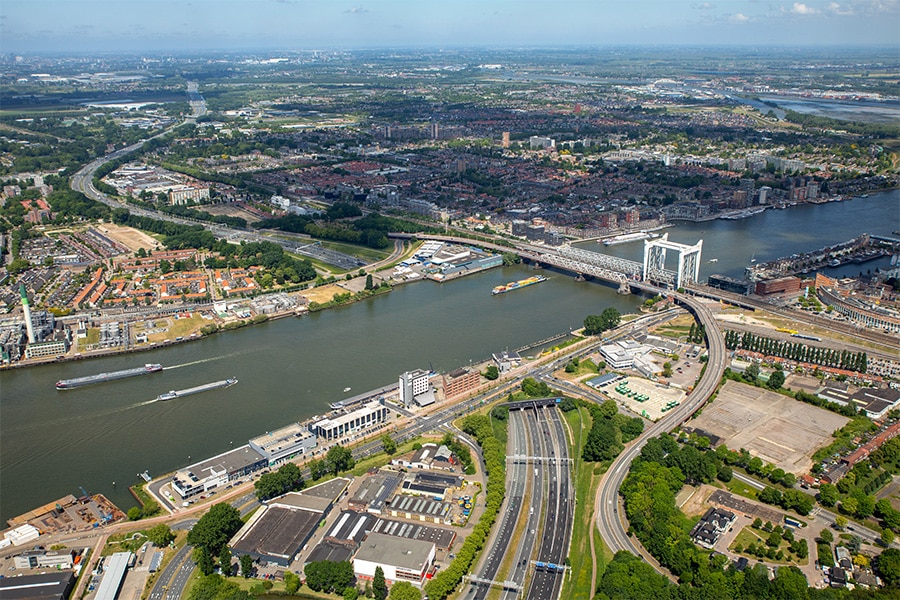
First hydrogen-powered asphalt spreader
Ambitious builder wants to be first to have zero-emission asphalt set on the road
Together with Koninklijke van Twist, BAM Infra Nederland has succeeded in converting a diesel-powered asphalt spreader into a machine with a hydrogen combustion engine. Earlier this year, the Netherlands' largest contractor also converted an asphalt spreader into an all-electric machine. It demonstrates BAM's ambition to build completely emission-free roads as soon as possible.

The asphalt spreader that BAM Infra presented to the world in early September is the first machine in the construction industry to run on a hydrogen combustion engine. The use of this asphalt spreading machine saves about 150 liters of diesel per eight-hour day. This amounts to a reduction of more than 80,420 kilograms of CO2 and virtually no annual nitrogen oxide emissions. The hydrogen tank can be refilled in ten to fifteen minutes.
In most cases, a fuel cell is used for hydrogen. However, BAM Infra used a hydrogen combustion engine. Unlike the fuel cell, for a hydrogen combustion engine the quality of hydrogen is not important. This asphalt spreader can therefore run on any quality of hydrogen. This saves on cleaning during hydrogen production and allows residual streams of hydrogen to be used as fuel.

Fully electric
In addition to an asphalt spreader running on hydrogen, earlier this year BAM also presented an asphalt spreader that is fully electrically powered. Together with partners Wirtgen and New Electric, BAM replaced the Stage V diesel engine with an electric drive consisting of a fixed 270 kWh battery and two smartly switched electric motors. With a second 270 KWh battery, the equipment can proceed directly to the next job after a long day of operation. The changeover battery is also suitable for use in other machines.
The use of the electric asphalt spreading machine saves about 150 liters of diesel per eight-hour turning day. This amounts to a reduction of more than 93,000 kilograms of CO2 and 115,000 grams of nitrogen oxide annually. On fully charged batteries, the electric asphalt spreader can be used for eight to 10 hours. In addition to the emission benefits, this electric asphalt spreader makes considerably less noise than current machines.

Sustainable
The conversion of diesel-powered GWW machines to emission-free variants shows the ambition of the Netherlands' largest contractor. Not for nothing is sustainability one of the central themes in BAM's strategy. With this new machine, the Bunnik-based company wants to contribute to reducing nitrogen emissions in the Netherlands. In doing so, they are constantly looking at opportunities for a positive environmental impact. Together with clients and partners, they look at sustainability goals for every job by offering creative and innovative solutions.
In terms of equipment, BAM is doing this by training employees in the "new turning," investing in the electric chain and, earlier, building the world's first electric roller by 2020.
Ninety percent of BAM Infra Nederland's machinery currently runs on Stage V engines using HVO as fuel. BAM aims to be the first contractor to have a completely emission-free asphalt set on the road.




